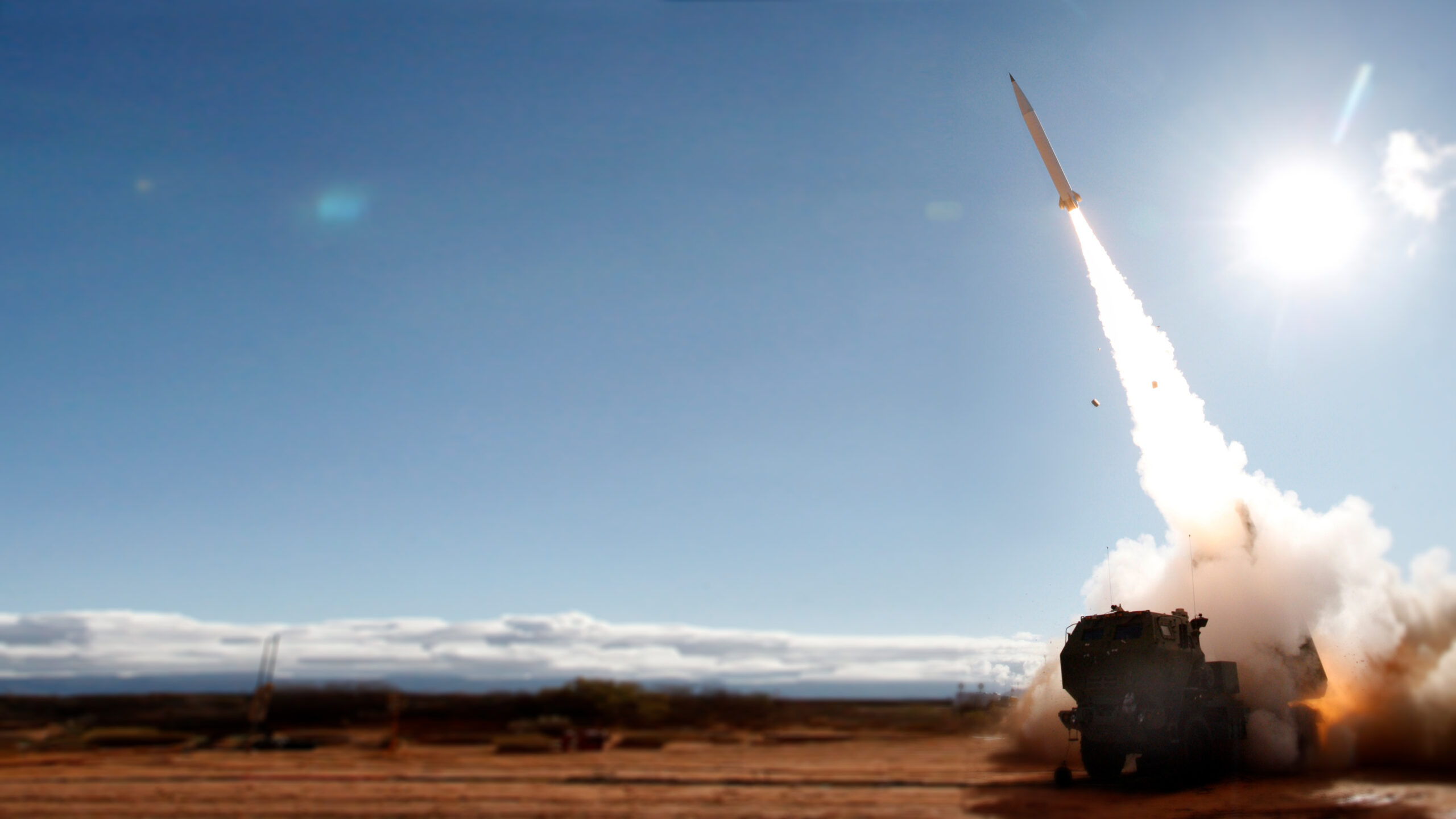
The Army’s PrSM weapon is seen during a test launch. (Lockheed Martin)
WASHINGTON — The United States military needs to speed up the development of a trio of enhanced missiles to prepare for any potential military conflict with China, according to the US commander in charge of the region.
US Indo-Pacific Command head Navy Admiral John Aquilino has been making his rounds on Capitol Hill this week to discuss his spending priorities with lawmakers and affirm that a war with China is “not inevitable.” However, his ongoing assessment of munitions needs for the theater has identified several deficiencies, he told members of the Senate Armed Services Committee today.
“We always look at lessons learned [and] certainly one that came out of the Ukraine conflict was the ability to ensure that our stockpiles were correct, with the right number and the right types of weapons in capability,” the admiral explained.
“The bottom line is the entire joint force is required to help deliver effects to both deter and fight and win,” he later added.
More specifically, the Pentagon’s fiscal 2024 budget request includes $9.1 billion for “Pacific Deterrence,” but Aquilino has submitted an unfunded priority list that identifies a $3.5 billion gap.
In the hearing, Aquilino was asked specifically about three weapons on that list: the hypersonic SM-6 Block 1B, a Maritime Strike Tomahawk and a future iteration of the Army’s Precision Strike Missile (PrSM Increment 2).
While that first ship-launched missile, designed to use its own speed to potentially counter incoming hypersonic missiles, is aligned for the Navy, Aquilo said wants the second two for land forces. He indicated Marine Littoral Regiments should be outfitted ground-based Tomahawk launchers that can fire the future maritime variant, while Army soldiers within new multi-domain task force formations need the ship sinking PrSM Inc 2.
“Those are the capabilities that those forces need to bring… with them in the region to do the missions assigned,” Aquilino said. “So that’s why I’ve advocated for those right types and right numbers.”
Aquilino and other combatant commanders have been tasked with reviewing their munition needs, Vice Chairman of the Joint Chiefs of Staff Adm Christopher Grady said earlier this month during a Center for Strategic and International Studies event. While this review has been billed as an ongoing exercise, Pentagon leaders watching Ukraine forces run through munitions against Russian troops are placing an increased emphasis on ramping up munition production lines and weapon stockpiles that they deem critical to military conflict in the Indo-Pacific waters.
That calculus is driving Pentagon leaders to seek dollars for new multi-year procurement deals in FY24 for several weapons including the Naval Strike Missile, SM-6, AIM-120 Advanced Medium-Range Air-to-Air Missile, Long Range Anti-Ship Missile (LRASM) and AGM-158B Joint Air-to-Surface Standoff Missile-Extended Range (JASSM-ER).
Aquilino told lawmakers that he also needs an influx of dollars to speed up the development of those three weapons, though it is not immediately clear if additional funds would make that happen.
For the SM-6 Block IB, Raytheon is developing the missile to strike targets at extended ranges by adding in a new second stage rocket motor. If missile development stays on track, the Navy anticipates having that weapon ready to deliver to its fleet in FY27, according to the annual Director, Operational Test and Evaluation report released in January.
The Navy is also working with Raytheon on the future Maritime Strike Tomahawk, or MST, to strike moving targets at sea from its fleet of Guided Missile Cruisers, Guided Missile Destroyers and Nuclear-Powered Fast Attack Submarines. The US Marine Corps is also developing a ground-based Tomahawk launcher that could be able to launch the new weapon.
Under the MST program, the all-up round missile is being upgraded along with the Tactical Tomahawk Weapons Control System, and the Theater Mission Planning Center, according to FY24 budget justification documents. If MST development proceeds as planned, it will be ready for initial fielding at the start of FY25, the service noted.
Meanwhile, the Army and Lockheed Martin are preparing to field PrSM Inc 1 to replace the company’s MGM-140 Army Tactical Missile System (ATACMS) and hit targets at least 500 kilometers away. The service is also eyeing a trio of follow up upgrades, including the aforementioned PrSM Inc 2 that Aquilino wants to see in the Indo-Pacific sooner rather than later.
Under that upgrade, the service is designing a multi-mode seeker, known as the Land-Based Anti-Ship Missile (LBASM) seeker, that will enable the weapon to also strike ships. Right now, though, the Army anticipates having an PrSM Inc 2 “early operational capability” ready in FY27, according to recent budget justification documents.
For this land-based weapon, though, it is not yet clear which countries will greenlight the US Army to station the weapon on their soil. On Monday, a senior US defense official told reporters that the Biden administration is having “ongoing discussions with allies and partners” about where capabilities like PrSM and land-based hypersonic weapons can be eventually placed.
“[Those] ongoing discussions [are] about making sure that we have the optimal force posture in the region and that’s focused on making sure we have the right mix of capabilities to strengthen deterrence,” the official said.






















